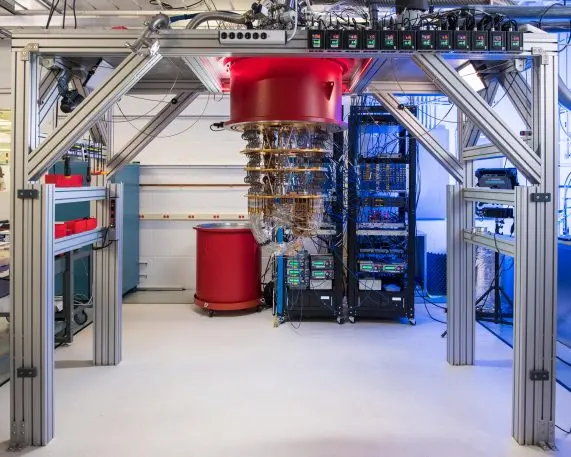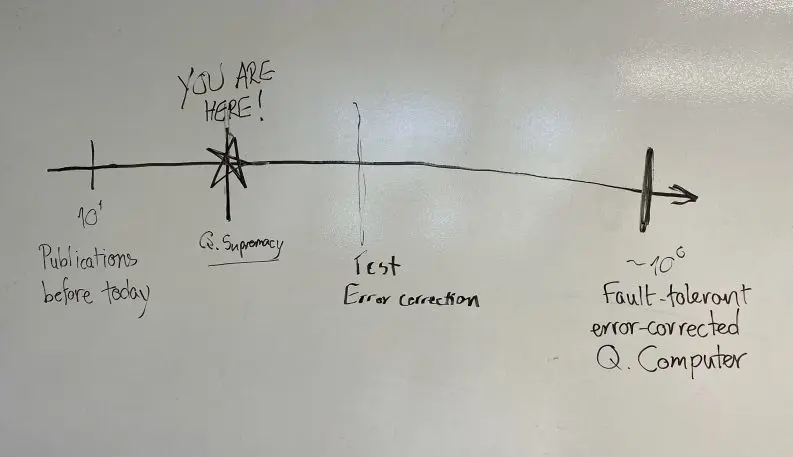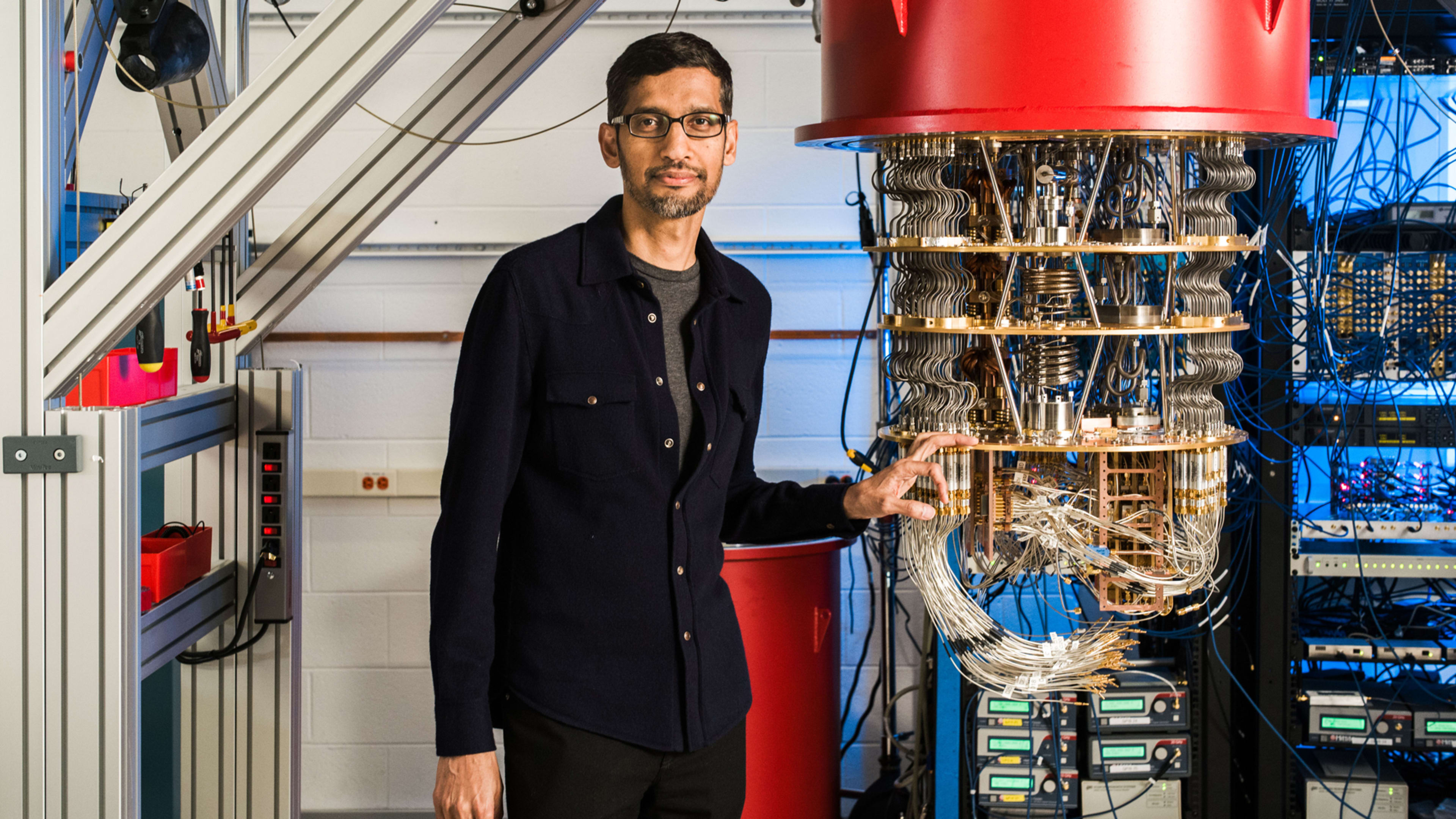On December 17, 1903, at Kitty Hawk, N.C., Orville Wright took flight in the Flyer 1, the airplane he had built with his brother Wilbur. Twelve seconds and one bumpy landing later, his trip was over and the air age had begun.
But if you were a typical newspaper reader at the time, you likely didn’t notice that anything historic had just happened. One widely syndicated article about the Wrights’ flight was cautiously headlined “Looks like a success” and deemed the news as “exciting.” But it didn’t identify Orville’s brief voyage as a landmark moment for human beings. Even a couple of years later, another story described the Wrights merely as “the inventors of the most successful flying machine that has appeared thus far.”
I thought about that muted reception in October when Google published a research paper saying that its research team in Goleta, Calif. had used an experimental quantum computer, with a processor dubbed “Sycamore,” to perform a random-number generation job in 200 seconds that would take even the fastest conventional supercomputer 10,000 years to complete. By doing so, Google’s scientists declared, they had achieved”quantum supremacy,” having built a quantum system capable of finishing a task that traditional computers simply can’t perform—unless you’re willing to wait until the year 12019 to get your results. Quantum-watchers have been awaiting such a moment for years and have long brought up the Wright Brothers when talking about it (here’s an example from 2009).
But by the time Google formally declared its achievement—which had leaked a month earlier—its quantum-computing rival IBM was already contending that quantum supremacy’s moment had not yet arrived. The state-of-the-art 200-petaflop IBM supercomputer installed at the Oak Ridge National Laboratory, the company said, could conduct Google’s benchmark task in just two and a half days. That’s nowhere near as fast as Sycamore but quick enough to be a plausible alternative.

A tiny bit of technical detail: When discussing quantum supremacy, there are two kinds of computers to consider. “Classical computers” encompasses everything based on traditional ones-and-zeroes number-crunching, from 1956’s UNIVAC 1 to the smartphone in your pocket to today’s most powerful supercomputers. Quantum computers, by contrast, harness altogether different concepts, physics, and technologies, with the basic building block being a quantum bit, or qubit—which can represent a one, a zero, or both at once. That gives them the potential to perform wildly ambitious computational tasks at speeds no classical computer will ever match.
Even if you buy into IBM’s stance that its supercomputer could have performed Google’s benchmark test in two and a half days rather than 10,000 years, the fact that Google’s Sycamore completed it in just 200 seconds should whet your appetite for quantum computing’ s potential. But the very phrase “quantum supremacy” has an epoch-shifting finality to it, as if achieving it will immediately usher in end times for classical computers. Google’s experiment in Santa Barbara, even if judged in the most favorable possible light, didn’t do that. As IBM’s rejoinder rightly pointed out, the future is far more likely to involve classical and quantum computers working in tandem.
Google's Hartmut NevenSputnik didn’t do much either. It circled the earth and beeped.”
By contrast, Google’s random-number exercise was relatively mundane, except for the part about it taking only 200 seconds. At Google’s event, Sergio Boixo, lead for the project’s theory team, called it “the ‘Hello World’ program for quantum computers,” the equivalent of the super-simple programming exercise that coders traditionally perform in a new language just to confirm that everything is working as expected. “It’s the first thing we want to try,” he explained.

Though Google is claiming the quantum-supremacy prize for itself, it acknowledges that plenty of work remains before quantum machines are ready for widespread adoption. For one thing, current quantum computers are prone to errors. At the event, Marissa Giustina, a member of the hardware team, used a whiteboard to plot out a timeline that showed the present day as less than halfway to the moment when fault-tolerant, error-corrected quantum computers are a mainstream reality.
Ultimately, Google’s quantum computer shouldn’t be judged by whether it renders alternative methods of computing obsolete, any more than whether we obsess over whether the Wrights killed off hot-air balloons. In Cade Metz’s fine story about the Sycamore calculation in the New York Times, University of Texas computer scientist Scott Aaronson compared it to the Wrights’ Kitty Hawk flight, which he said “proved the point” the brothers were trying to make even though their airplane was not yet a practical means of transportation. It did. And that’s why Wilbur and Orville are legends and accomplished rivals such as Glenn Curtis are not.

Though undeniably true, that wasn’t obvious in 1957. U.S. newspapers lavished attention on Sputnik’s launch but tended to fixate on whether the Russians intended to use their new technology to spy on the U.S. and/or drop bombs on it. Only as the U.S. reacted to Sputnik by taking space seriously did it become clear why Sputnik mattered so much—and it wasn’t about Sputnik but what followed.
For now, the historical allusion that I find most intriguing is one UT’s Aaronson made in a blog post at his own site. Ruminating on Google’s research paper and IBM’s reaction to it, he concluded that IBM was likely right that it could match Google’s Sycamore results on its best supercomputer. But he still saw Google’s accomplishment as historic. And when he brought up 1969’s Apollo 11 moon landing, it wasn’t to say that Google had pulled off something similar—but to say that quantum supremacy isn’t like that at all:
From the beginning, it was clear that quantum supremacy would not be a milestone like the moon landing—something that’s achieved in a moment, and is then clear to everyone for all time. It would be more like eradicating measles: it could be achieved, then temporarily unachieved, then re-achieved. For by definition, quantum supremacy [is] all about beating something—namely, classical computation—and the latter can, at least for a while, fight back.
Very little human progress has ever been “achieved in a minute, and then . . . clear to everyone for all time.” So it’s perfectly fine to bide our time before assessing the full impact of Google’s exercise—and to value it even if we haven’t yet entered the age when quantum computing is ready to reign supreme.
Recognize your brand’s excellence by applying to this year’s Brands That Matter Awards before the early-rate deadline, May 3.
